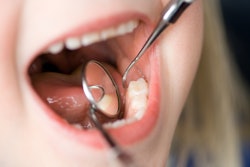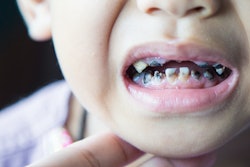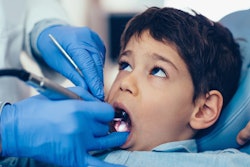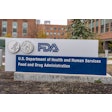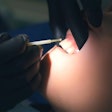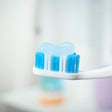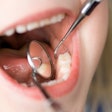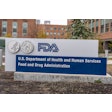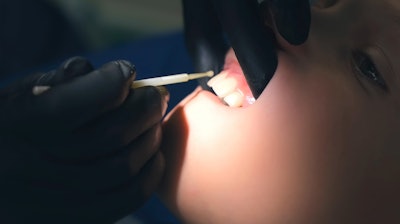
Waiting 30 minutes to rinse after silver diamine fluoride (SDF) therapy is no more effective at preventing early childhood caries than rinsing immediately. This clinical trial was published on August 12 in the Journal of Dentistry.
When providing guidance, clinicians should consider individual risk factors, lesion details, and the unpleasant taste of SDF that may affect its acceptance by young children, the authors wrote.
"This randomised clinical trial found the postoperative instructions of immediate rinsing or refraining from rinsing, drinking, or eating for 30 minutes after SDF therapy had no significant effect on caries arrest in primary teeth," wrote the authors, led by Ivy Guofang Sun of the University of Hong Kong in China.
For this randomized clinical trial, 275 children ages 3 to 4 with active caries were included in the study. Parents provided demographic and oral health behavior information through a questionnaire while a dentist assessed caries using the decayed, missing, and filled teeth (DMFT) index and oral hygiene with the visible plaque index.
After receiving 38% SDF therapy, the children were randomly divided into two groups: Group A rinsed with water immediately. Group B was instructed to avoid rinsing, drinking, or eating for 30 minutes. Six months later, the same examiner assessed the caries-arrest rate, comparing the two groups, the research team wrote.
The mean DMFT and DMFS (decayed, missing, and filled teeth or surfaces) scores were 3.4 and 4.6, respectively. At baseline, 151 children with 572 carious surfaces were assigned to group A, and 147 children with 586 carious surfaces to group B. At the six-month follow-up, 138 children in group A with 519 SDF-treated surfaces and 137 children in group B with 550 SDF-treated surfaces were examined, according to the study.
Size, position, and surface location of carious lesions were significantly linked to caries arrest. Children with larger carious lesions, lesions on the occlusal surfaces of the lower posterior teeth, those who were bottle-fed at night, and those without parent-assisted tooth brushing had a 0.18 probability of caries arrest after six months of SDF application.
Furthermore, the attrition rate after six months was 9% in group A and 7% in group B. The caries arrest rate was 65% for group A and 61% for group B, with no significant difference between the groups (p = 0.28), according to the results.
However, future research may be needed to confirm the effectiveness of SDF therapy on permanent teeth, the authors wrote.
"This randomised clinical trial concluded that not rinsing for 30 minutes after SDF therapy is not better than immediate rinsing in arresting early childhood caries," Sun and colleagues wrote.





